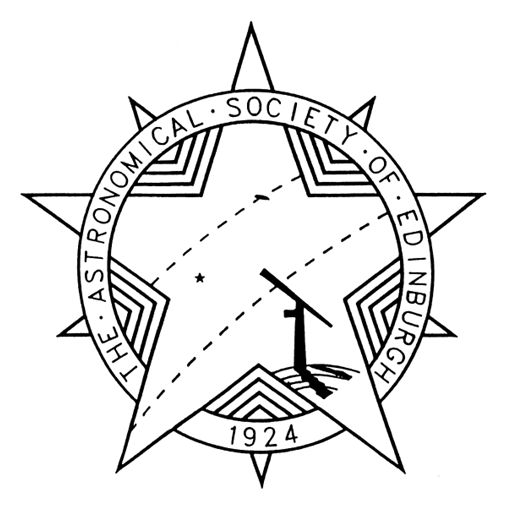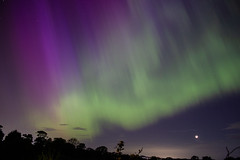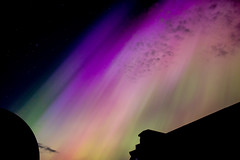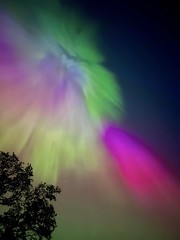Monthly Archives: May 2019
Scotland’s Sky in June, 2019
Is Jupiter’s Great Red Spot unfurling before our eyes?

The maps show the sky at 01:00 BST on the 1st, midnight on the 16th and 23:00 on the 30th. (Click on map to enlarge)
The Sun reaches its most northerly point at 16:54 BST on the 21st, marking the summer solstice in our northern hemisphere. Between its setting in the north-west and its rising in the north-east, it follows only a shallow arc below Edinburgh’s horizon and stands, at most, 10.6° below Edinburgh’s due-north horizon at 01:14 BST. As a result, twilight persists throughout our June nights and we must stay up late to glimpse even the brighter stars and planets.
The sunrise/sunset times for Edinburgh change from 04:36/21:46 BST on the 1st, to 04:26/22:03 on the 21st and 04:30/22:02 on the 30th. The Moon is new on the 3rd, at first quarter on the 10th, full on the 17th and at last quarter on the 25th.
At times like these, some stargazers forsake their hobby for a couple of months while others switch to observing the Sun, or, perhaps, noctilucent clouds. This June, though, the giant planet Jupiter is well worth a look as it comes to opposition on the 10th. It is then closest to us (641 million km) and stands directly opposite the Sun, so that it rises in the south-east at sunset and passes (for Edinburgh) less than 12° high in the south in the middle of the night.
Conspicuous at magnitude -2.6 as it creeps westwards against the stars of southern Ophiuchus, Jupiter outshines every other object in our night sky except for the Moon which lies close to it on the night of the 16th-17th. A small telescope or good steadily-held binoculars reveal its four main moons, the Galilean moons, as they orbit from east to west of the planet in periods that range from 1.8 days for Io to 16.7 days for Callisto. Jupiter has more moons, 79 at the latest count, than any other planet, with Saturn’s tally of 62 coming second. Jupiter’s 75 lesser moons, though, are too small and dim to be spotted using any but the largest telescopes.
Jupiter’s globe is shrouded in clouds, mainly of ammonia crystals but tinted red and brown by other compounds which may include hydrocarbons. Telescopes show bands of darker cloud and a plethora of streaks and spots that transit smartly across the disk as the planet rotates in its sub-ten-hour day.
The most famous feature, the Great Red Spot, is an anticyclonic storm that may be more than 300 years old and was once larger than three Earths. It has shrunk significantly over the last century but observations over the past two weeks suggest something startling may be afoot and even that the spot may be disintegrating. It appears that 10,000-km-long streamers of reddish gas, perhaps methane-rich, are peeling away from the spot into the adjacent cloud band, the South Equatorial Belt, that circles the planet. Likened by some to the spot unfurling, nothing on this scale has been seen before so it is just as well that NASA’s Juno probe has a ring-side view as it orbits Jupiter.
Some 30° to the east of Jupiter, below the so-called Teaspoon of Sagittarius, is our Sun’s other gas giant planet, Saturn. Rising in the south-east about one hour before our map times, it brightens slightly from magnitude 0.3 to 0.1 to rival the two brightest stars on our south map – Vega in Lyra which stands very high in the east-south-east and Arcturus in Bootes in the middle of our south-western sky. When Saturn lies just left of the Moon on the night of the 18th, it lies 1,361 million km away and a telescope shows its disk and rings to span 18 and 41 arcseconds respectively.
The constellations of Ophiuchus and Hercules sprawl across the meridian at the map times, though our twilight means that this is not the best month for spotting M13, the Great Globular Cluster in Hercules (see map). Discovered by Edmond Halley of comet fame in 1714, this ball of hundreds of thousands of stars is some 160 light years across, 22,200 light years away and is thought to have formed 11.65 billion years ago. Under the best conditions, binoculars show it as a fuzzy circular patch around two-thirds as wide as the Moon.
Although Venus is brilliant at magnitude -3.9, it rises in the north-east around 40 minutes before the Sun and is unlikely to be noticed in Scotland’s dawn twilight. Mars is now as dim as magnitude 1.8 and becoming much harder to spot low down in our north-western evening twilight. Tracking eastwards in Gemini to pass below Castor and Pollux, it sets for Edinburgh at 00:05 BST on the 5th when it is 4° to the right of the slender young earthlit Moon. Mercury, much easier at magnitude -0.7, lies 11° below-right of Mars at that time and is 4° above the horizon one hour after sunset between the 5th and 19th. Mercury passes 0.2° above Mars on the 18th and stands furthest east of the Sun (25°) on the 24th.
Scotland’s noctilucent cloud season is just beginning and we can look forward to occasional displays of these “night-shining” clouds until August. Often with a bluish-white sheen, they may appear as wisps, streaks and whirls and merge into banks with cirrus-like herring-bone patterns. The clouds are formed when ice crystallises on dust particles in a narrow range of altitudes near 82 km. Here they are high enough to catch the sun’s light when our more typical lower-level terrestrial clouds are in darkness, from, say, one hour after sunset until one hour before sunrise. They rarely reach more than 20° above the horizon and favour directions towards the north-west at nightfall shifting to the north-east before dawn.
Diary for 2019 June
Times are BST
3rd 11h New moon
4th 17h Moon 4° S of Mercury
5th 16h Moon 1.6° S of Mars
7th 09h Moon 0.5° N of Praesepe
8th 21h Moon 3° N of Regulus
10th 07h First quarter
10th 16h Jupiter at opposition at distance of 641 million km
16th 20h Moon 2.0° N of Jupiter
17th 10h Full moon
18th 16h Mercury 0.2° N of Mars
19th 05h Moon 0.4° S of Saturn
21st 16:54 Summer solstice
24th 00h Mercury furthest E of Sun (25°)
25th 11h Last quarter
30th 17h Moon 2.3° N of Aldebaran
Alan Pickup



